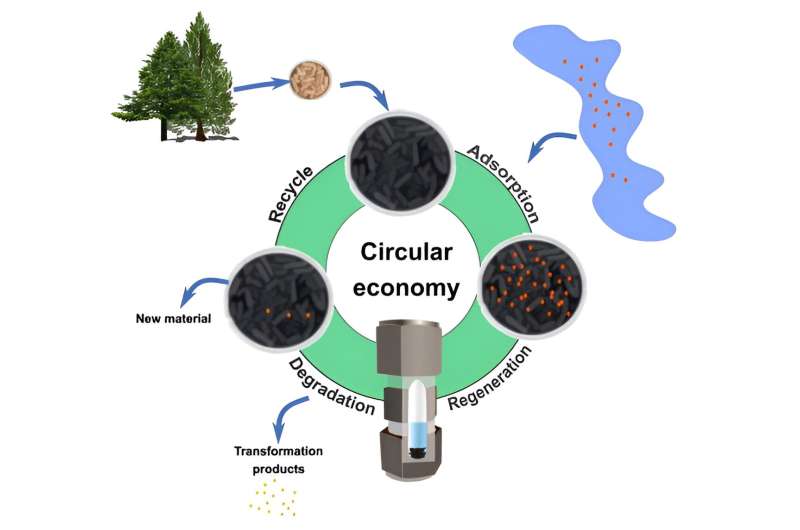This article has been reviewed according to Science X's editorial process and policies. Editors have highlighted the following attributes while ensuring the content's credibility:
fact-checked
trusted source
proofread
New method to recycle adsorbents in wastewater treatment

Removing pollutants from wastewater using adsorbents like activated carbon is often unsustainable. Once saturated, these adsorbents need to be regenerated which can require high temperatures. Pierre Oesterle's thesis shows how this can be done in a more environmentally friendly way using pressure cooking technology.
Every day, thousands of compounds are released into wastewater from domestic and industrial effluents—from pesticides and antibiotics to plasticizers. To stop these pollutants from reaching the environment, materials such as activated carbon, possessing a high surface area, can be used to adsorb them.
"These adsorbents are produced from coal and coconut industries, making their use unsustainable. In addition, the spent activated carbon is often regenerated by first drying the adsorbent and then using temperatures above 600°C to degrade the adsorbed pollutants," says Oesterle, doctoral student at the Department of Chemistry at Umeå University.
In his thesis, Oesterle explored residues from wood and agricultural industries as alternatives to commonly used activated carbon. These adsorbents, so-called activated biochars, were investigated for their capacity to adsorb two antibiotics, trimethoprim and sulfamethoxazole, and caffeine. He subsequently used a new regeneration method that do not require a drying step and which operate at lower treatment temperature: hydrothermal treatment.
The results are promising. The compounds adsorbed were not detected at temperatures above 280°C; instead, they transformed into other products. In addition, when the materials were recycled, their removal capacity increased for some of the contaminants. Finally, the degradation of the adsorbed compounds showed that new carbon structures formed on the surface of the materials which could have advantages when it is being recycled.
"Circular economy is all about recycling and reusing materials. These results can lead to development of hydrothermal treatment on a larger scale, both of activated carbon and other alternatives. It may also increase public awareness that the absence of the compounds we are looking for does not mean that they have vanished.
"Instead, they transform into secondary products potentially more harmful than the initial ones. These by-products need to be assessed. A famous quote sums it up: 'Nothing is lost, nothing is created, everything transforms,'" says Oesterle.
More information: Pierre Oesterle, Exploring the fate of emerging contaminants during hydrothermal regeneration of carbonaceous adsorbents. umu.diva-portal.org/smash/record.jsf?pid=diva2%3A1804018&dswid=2256
Provided by Umea University





















